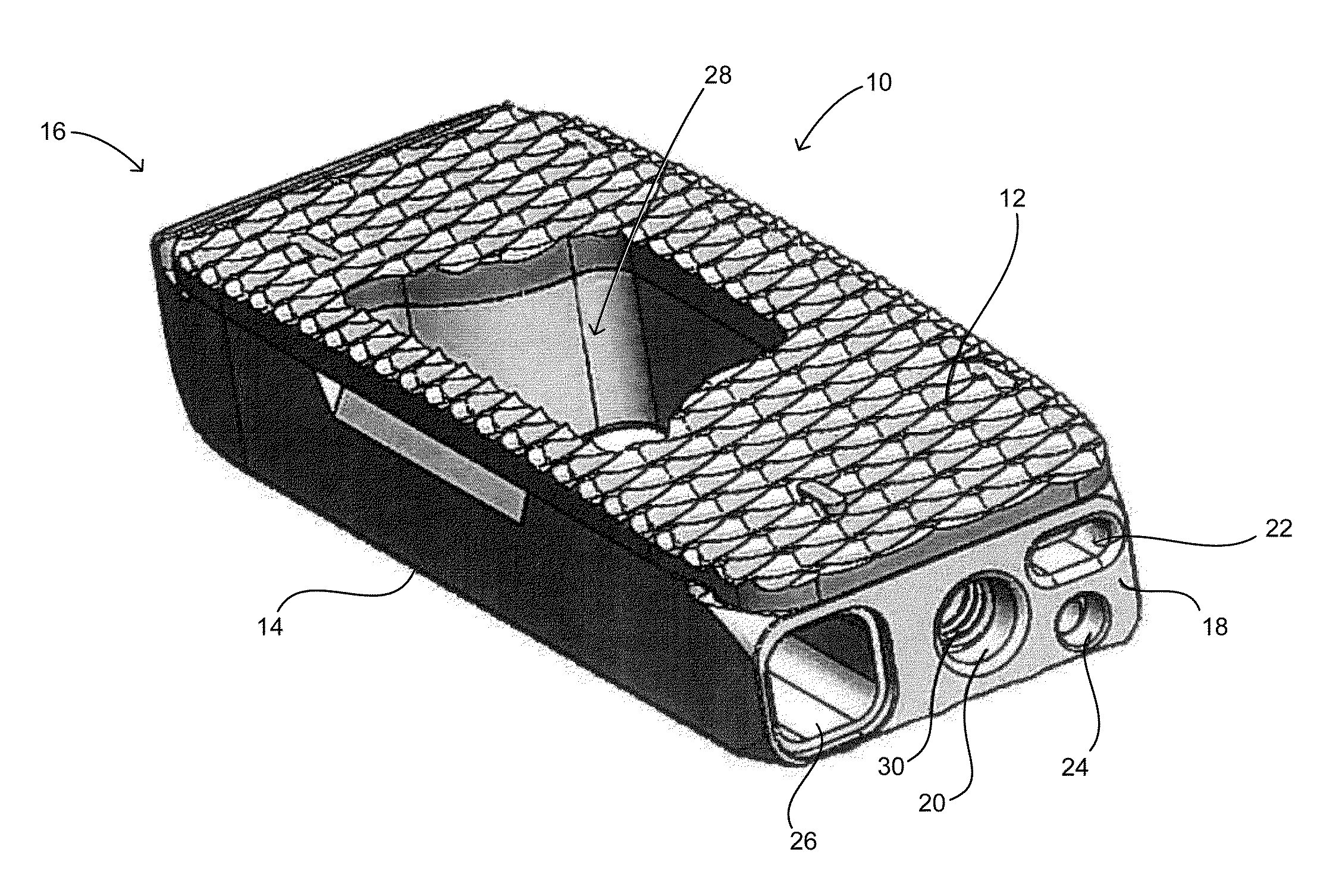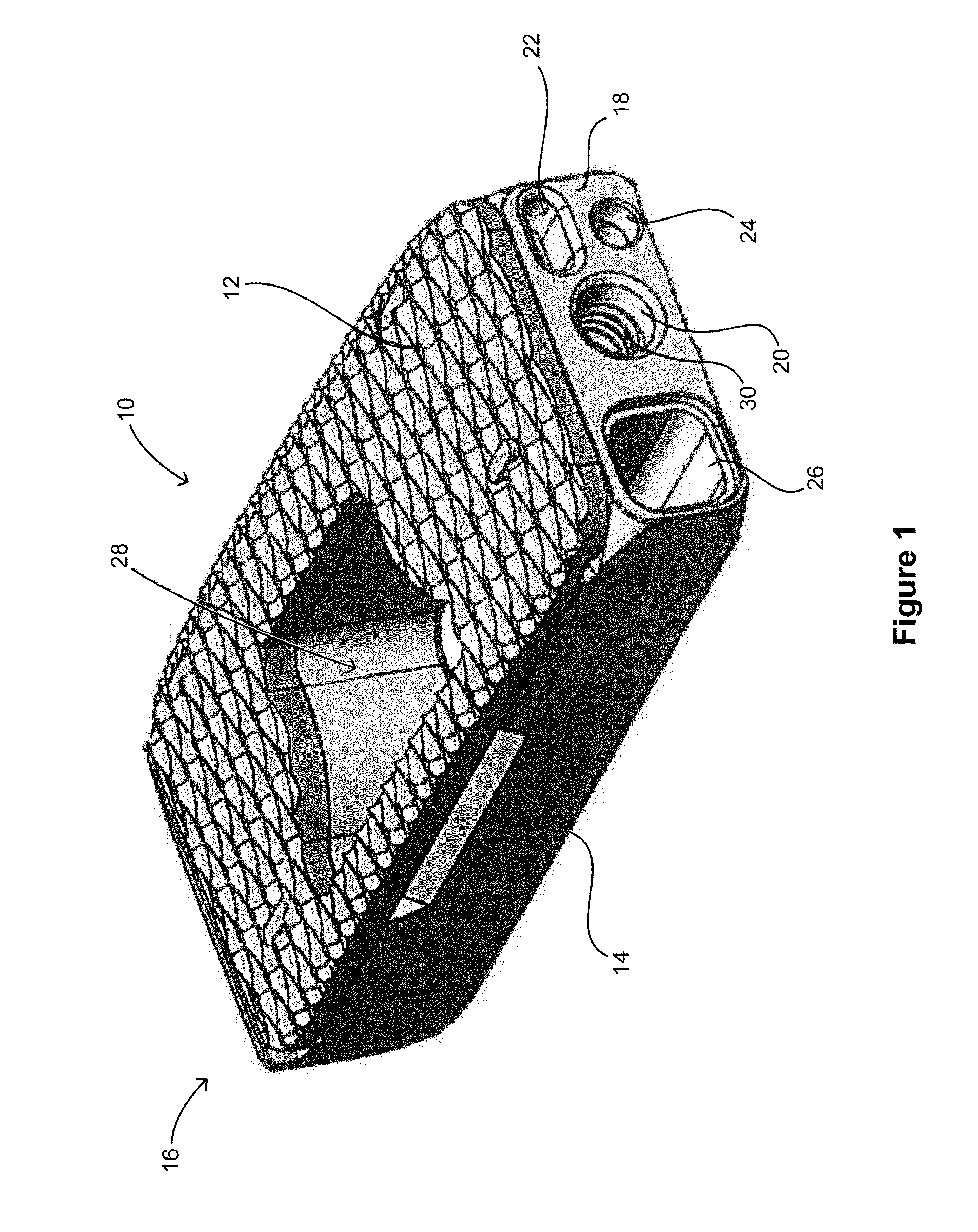Structurally supporting insert for spinal fusion cage
a cage and structure technology, applied in the field of composite spinal intervertebral body cages, can solve the problems of affecting the stability of the interbody cage, the relative weakness and/or brittleness of the material, and the insertion of the majority of the cages
- Summary
- Abstract
- Description
- Claims
- Application Information
AI Technical Summary
Benefits of technology
Problems solved by technology
Method used
Image
Examples
Embodiment Construction
[0021]In exemplary embodiments, the present disclosure is directed to a device for providing spinal support for fusion wherein the device contains a structural insert to support the loads placed on the device during insertion.
[0022]FIG. 1 shows an embodiment of a spinal fusion cage 10 including a top surface 12, a bottom surface 14, a distal face 16 and a proximal surface 18. The proximal surface 18 is configured to contain an attachment port 20, a torque resistant port 22, a fluid port 24 and a bone graft port 26. The attachment port is used as a means for attaching the spinal fusion cage 10 to an insertion instrument (not shown) for placing the spinal fusion cage into the prepared intervertebral space.
[0023]In this exemplary embodiment, the attachment port 20 is a circular opening that is in communication with a structural threaded insert 30 (best shown in FIGS. 3 and 4). The structural threaded insert is comprised of a material that is typically stronger that the material of the ...
PUM
 Login to View More
Login to View More Abstract
Description
Claims
Application Information
 Login to View More
Login to View More - R&D
- Intellectual Property
- Life Sciences
- Materials
- Tech Scout
- Unparalleled Data Quality
- Higher Quality Content
- 60% Fewer Hallucinations
Browse by: Latest US Patents, China's latest patents, Technical Efficacy Thesaurus, Application Domain, Technology Topic, Popular Technical Reports.
© 2025 PatSnap. All rights reserved.Legal|Privacy policy|Modern Slavery Act Transparency Statement|Sitemap|About US| Contact US: help@patsnap.com



